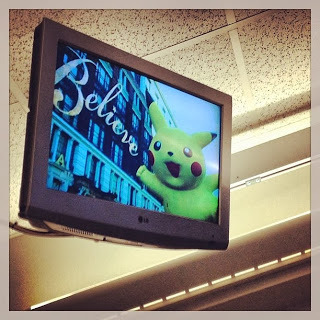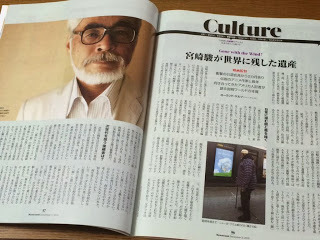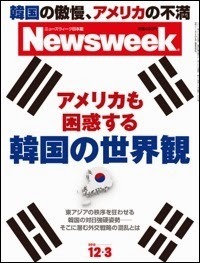Roland Kelts's Blog, page 43
December 20, 2013
Travel and Fear -- my latest column for Paper Sky magazine
Published on December 20, 2013 17:33
December 11, 2013
Latest on manga's big year abroad for The Japan Times
Banner year for manga
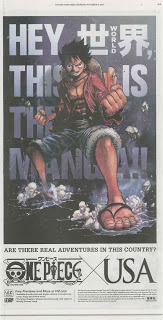
One week before Thanksgiving on Nov. 28, readers of The New York Times were greeted by a spiky-haired, wild-eyed manga character named Monkey D. Luffy, his fists clenched and chest bare, charging forward as if the newsprint could barely contain him. Behind him in massive text screamed the words: “Hey world, this is the manga!!” above a smaller query, “Are there real adventures in this country?”
Most NYT readers over the age of 40 probably had no idea who he was or why he was bringing it on. But millions of others do — 345 million worldwide, to be specific, according to Japanese publisher Shueisha, and U.S. distributor Viz Media — making Luffy the wily and mischievous pirate hero of what is now the most popular manga series in the world: Eiichiro Oda’s “One Piece.”
“It’s such a milestone,” says Andy Nakatani, editor-in-chief of the English edition of Weekly Shonen Jump magazine. “Three-hundred million in print in Japan and 45 million in the rest of the world. Shueisha wanted to do something very special. They called it a ‘newspaper-jacking,’ hijacking each newspaper in Japan and tailoring local images, such as characters on the beach in one prefecture or eating the local fruit in another.”
Like most print media, manga sales have struggled against the challenge of cross-platform digital piracy. A couple of years ago, a friend told me of a fellow American passenger en route to Tokyo gleefully perusing manga titles on his iPad. “I love this stuff,” he told my friend, “and the great thing is, it’s totally free.”
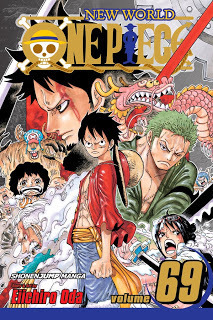 [ONE PIECE © 1997 by Eiichiro Oda/SHUEISHA Inc.]
[ONE PIECE © 1997 by Eiichiro Oda/SHUEISHA Inc.]
Manga sales peaked in the early to mid-2000s. Afterward, the perfect storm of an oversaturated market, global economic crises and the proliferating accessibility of high-speed uploading and downloading capacities nearly crashed the ship — all of which makes Shueisha’s bold global ad campaign and sales figures at the close of 2013 that much more arresting.
“(‘One Piece’) has amazing consistency in terms of content and quality,” says Leyla Aker, vice president of publishing at Viz. “Oda has managed to keep it fresh over 70-plus volumes. I’m always astounded to see that there’s the same creative energy and freshness as there was in Volume 1. I think he’s a creative genius.”
Other Viz titles with high sales include “Naruto,” “Death Note,” “Dragonball Z” and “Bleach.” But by a wide margin in global numbers, Oda’s pirate-adventure episodes outpace them all, selling 3 million in the United States alone.
The consistency of “One Piece,” and its engaging mix of adventure and heartbreak, is merely an accident of a short attention span, according to Oda. “The thing is, I get bored easily,” he tells me. “So if my manga was just about the action, or comedy, or tear-jerking moments, I would get bored. I change the style of the series to keep up my motivation to draw.”
Oda claims that his inspiration comes from sheer fatigue. He doesn’t sleep or eat much while he’s working, and maybe that’s why his characters are so extreme and seem perpetually desperate.
“Humans can only come up with new ideas when they’ve reached their limits,” he says. “When I finish a manuscript, I am completely exhausted.”
 Eiichiro Oda
Eiichiro Oda
Oda’s abiding interest in pirates and adventure emerged from one of his favorite childhood anime series, “Vickie the Viking.” “I learned that Vikings were a kind of pirate, and I thought it was awesome to have friends on your team. That series’ spirit is carried on in my work.”
Team spirit and mutual reliance are among the hallmarks of Japanese popular culture, from manga to anime to the communal spirit of cosplay. Oda says that he writes for himself — or the boy he was at 15 — imagining what his teenage self would want to read in a riveting story.
“A lot of Oda’s stories and themes are not as Japan-centric as other series,” says Alexis Kirsch, the English-language editor of “One Piece” at Viz.
Aker agrees. “(‘One Piece’) has a lot of the characteristics of properties that do well across international borders. Fantastical settings like those in ‘Lord of the Rings’ or ‘Star Wars’ seem to have a universal resonance. Oda does that very well.”
This year is turning into a banner one for manga abroad. A little over a month ago, Crunchyroll, the popular legal online portal for Japanese popular culture, launched its digital manga site. Vertical Inc. and Viz are pushing digital manga via their own branded outlets, and Crunchyroll just received a big investment from The Chernin Group, Fox media veteran Peter Chernin’s team, who were wooing Hulu as recently as last spring. “Anime and manga fans are early tech adopters and passionate,” says Jesse Jacobs, president of the Chernin Group. “They're the future of media.”
Still, manga sales in Japan and overseas face the deluded assumptions of a generation of so-called “digital natives,” who assume the content should be free and easily accessible via fan translations and computer scans (aka “scanlations”).
“It’s been a few years since we saw the main impact from piracy,” says Viz’s Aker. “It was the rise of the aggregator sites where we really saw it. In the intervening years not much has changed. The fact is there are now legal and fast ways to get manga content, so of course, we’re hoping this is going to help. We’re serializing ‘One Piece’ in Shonen Jump magazine. It can’t get much faster than that.”
Print sales of 345 million would be astonishing at any time, let alone now, when e-books and other digital media are crowding out paper. But manga is a growing global phenomenon, and its reach is still expanding. Readership is spiking across Asia, the Middle East and Africa, with new translations hitting the shelves.
Sadly, admits Aker, “the (free) scanlations have become so established and so broad, it will take something pretty dramatic to change people’s minds. It’s going to take a lot.”
Roland Kelts is the author of

One week before Thanksgiving on Nov. 28, readers of The New York Times were greeted by a spiky-haired, wild-eyed manga character named Monkey D. Luffy, his fists clenched and chest bare, charging forward as if the newsprint could barely contain him. Behind him in massive text screamed the words: “Hey world, this is the manga!!” above a smaller query, “Are there real adventures in this country?”
Most NYT readers over the age of 40 probably had no idea who he was or why he was bringing it on. But millions of others do — 345 million worldwide, to be specific, according to Japanese publisher Shueisha, and U.S. distributor Viz Media — making Luffy the wily and mischievous pirate hero of what is now the most popular manga series in the world: Eiichiro Oda’s “One Piece.”
“It’s such a milestone,” says Andy Nakatani, editor-in-chief of the English edition of Weekly Shonen Jump magazine. “Three-hundred million in print in Japan and 45 million in the rest of the world. Shueisha wanted to do something very special. They called it a ‘newspaper-jacking,’ hijacking each newspaper in Japan and tailoring local images, such as characters on the beach in one prefecture or eating the local fruit in another.”
Like most print media, manga sales have struggled against the challenge of cross-platform digital piracy. A couple of years ago, a friend told me of a fellow American passenger en route to Tokyo gleefully perusing manga titles on his iPad. “I love this stuff,” he told my friend, “and the great thing is, it’s totally free.”
 [ONE PIECE © 1997 by Eiichiro Oda/SHUEISHA Inc.]
[ONE PIECE © 1997 by Eiichiro Oda/SHUEISHA Inc.]Manga sales peaked in the early to mid-2000s. Afterward, the perfect storm of an oversaturated market, global economic crises and the proliferating accessibility of high-speed uploading and downloading capacities nearly crashed the ship — all of which makes Shueisha’s bold global ad campaign and sales figures at the close of 2013 that much more arresting.
“(‘One Piece’) has amazing consistency in terms of content and quality,” says Leyla Aker, vice president of publishing at Viz. “Oda has managed to keep it fresh over 70-plus volumes. I’m always astounded to see that there’s the same creative energy and freshness as there was in Volume 1. I think he’s a creative genius.”
Other Viz titles with high sales include “Naruto,” “Death Note,” “Dragonball Z” and “Bleach.” But by a wide margin in global numbers, Oda’s pirate-adventure episodes outpace them all, selling 3 million in the United States alone.
The consistency of “One Piece,” and its engaging mix of adventure and heartbreak, is merely an accident of a short attention span, according to Oda. “The thing is, I get bored easily,” he tells me. “So if my manga was just about the action, or comedy, or tear-jerking moments, I would get bored. I change the style of the series to keep up my motivation to draw.”
Oda claims that his inspiration comes from sheer fatigue. He doesn’t sleep or eat much while he’s working, and maybe that’s why his characters are so extreme and seem perpetually desperate.
“Humans can only come up with new ideas when they’ve reached their limits,” he says. “When I finish a manuscript, I am completely exhausted.”
 Eiichiro Oda
Eiichiro OdaOda’s abiding interest in pirates and adventure emerged from one of his favorite childhood anime series, “Vickie the Viking.” “I learned that Vikings were a kind of pirate, and I thought it was awesome to have friends on your team. That series’ spirit is carried on in my work.”
Team spirit and mutual reliance are among the hallmarks of Japanese popular culture, from manga to anime to the communal spirit of cosplay. Oda says that he writes for himself — or the boy he was at 15 — imagining what his teenage self would want to read in a riveting story.
“A lot of Oda’s stories and themes are not as Japan-centric as other series,” says Alexis Kirsch, the English-language editor of “One Piece” at Viz.
Aker agrees. “(‘One Piece’) has a lot of the characteristics of properties that do well across international borders. Fantastical settings like those in ‘Lord of the Rings’ or ‘Star Wars’ seem to have a universal resonance. Oda does that very well.”
This year is turning into a banner one for manga abroad. A little over a month ago, Crunchyroll, the popular legal online portal for Japanese popular culture, launched its digital manga site. Vertical Inc. and Viz are pushing digital manga via their own branded outlets, and Crunchyroll just received a big investment from The Chernin Group, Fox media veteran Peter Chernin’s team, who were wooing Hulu as recently as last spring. “Anime and manga fans are early tech adopters and passionate,” says Jesse Jacobs, president of the Chernin Group. “They're the future of media.”
Still, manga sales in Japan and overseas face the deluded assumptions of a generation of so-called “digital natives,” who assume the content should be free and easily accessible via fan translations and computer scans (aka “scanlations”).
“It’s been a few years since we saw the main impact from piracy,” says Viz’s Aker. “It was the rise of the aggregator sites where we really saw it. In the intervening years not much has changed. The fact is there are now legal and fast ways to get manga content, so of course, we’re hoping this is going to help. We’re serializing ‘One Piece’ in Shonen Jump magazine. It can’t get much faster than that.”
Print sales of 345 million would be astonishing at any time, let alone now, when e-books and other digital media are crowding out paper. But manga is a growing global phenomenon, and its reach is still expanding. Readership is spiking across Asia, the Middle East and Africa, with new translations hitting the shelves.
Sadly, admits Aker, “the (free) scanlations have become so established and so broad, it will take something pretty dramatic to change people’s minds. It’s going to take a lot.”
Roland Kelts is the author of
Published on December 11, 2013 08:45
December 2, 2013
The Chernin Group buys into anime (via Crunchyroll)

THE CHERNIN GROUP ACQUIRES MAJORITY STAKE IN CRUNCHYROLLLOS ANGELES, CA – December 2, 2013 – The Chernin Group (“TCG”), which manages and invests in businesses in the media, entertainment and technology sectors globally, today announced it has acquired a majority stake in Crunchyroll, Inc., the leading global video streaming service for anime content. The Company’s senior management will maintain a significant stake in the Company along with existing investor TV TOKYO. Financial terms of the transaction were not disclosed.
Founded in 2007 and based in San Francisco, CA, with an office in Tokyo, Japan, Crunchyroll has built the world’s premier over-the-top video service for Japanese anime content and one of the leading OTT and SVOD platforms online. Crunchyroll features both a free, ad-supported online video offering as well as a subscription online video service to a targeted and passionate fan base in more than 160 countries.
The Company delivers new and library content from leading Japanese studios and broadcasters directly to viewers outside of Japan across online and mobile platforms and multiple devices such as desktops, mobile phones, tablets, connected TVs and consoles, including PlayStation®, Apple TV, Xbox and Roku®. By expanding Crunchyroll’s rich content offering into new markets and onto new devices, the Company has sustained and increased viewership, more than doubling its subscriber base within the last year.
Beyond online video, Crunchyroll provides a deep experience for anime fans by offering e-commerce, news, community features and a newly launched free and premium digital manga offering. TCG intends to work with Crunchyroll and its management team both to grow the existing anime business and to use Crunchyroll as a platform to launch new non-anime channels across multiple different genres.
“We’re thrilled to partner with Crunchyroll,” said Peter Chernin, Founder & CEO of TCG. “The Crunchyroll founders and senior management team have accomplished two incredible things. One, they have built one of the leading online video companies in the industry. And, two they have created the best and largest community for anime video in the world. We couldn't be more excited about the future. Our plan is to continue to grow the anime vertical as well as launch new channels in different genres. Online video is growing faster than any other sector within media, and we feel that with Crunchyroll, we have a fantastic, anchor platform."
Kun Gao, Founder and CEO of Crunchyroll, said, “TCG is the perfect partner for us. We decided to work with TCG based on their passion for the online video space, expertise in media, understanding of creative content and strong track-record of growing businesses. Anime is at the heart of our company – We love anime, supporting the growing anime community and working to provide the best entertainment to its fans.
"This investment from TCG will allow us to provide an even better experience and service for anime producers and fans worldwide.”
Yukio Kawasaki, General Manager of the Animation Division of TV TOKYO, said, “We have had a phenomenal relationship with Crunchyroll dating back to 2009 as both a content provider and an investor. Crunchyroll has opened up new markets and revenue streams to us. We welcome The Chernin Group to the Crunchyroll family and look forward to working with them and Crunchyroll management to continue this fantastic ride.”
About The Chernin Group
The Chernin Group, LLC (TCG) is a privately held, independent media holding company founded by Peter Chernin and based in Los Angeles, CA. TCG has built, managed, operated and invested in businesses in the media, entertainment and technology sectors around the world since 2010. TCG's assets include Chernin Entertainment, which produces feature films and television programs; a majority stake in Hong Kong-based CA Media, which builds, manages and operates media, entertainment and technology businesses across Asia; and several strategic investments in digital media companies, which have included Pandora, Fullscreen, Base79, MiTú, Tumblr, Flipboard and Scopely. Providence Equity Partners LLC; Qatar Holding LLC; Victor Koo (founder and CEO of Youku) and Chengwei Capital; and other shareholders are strategic partners of and investors in TCG.
About Crunchyroll, Inc.
Crunchyroll is a leading global destination and platform for Japanese anime and Asian content. Through applications including Crunchyroll for iPhone, iPad, Android, Playstation®3, Playstation®4, Xbox LIVE®, AppleTV, Roku, Internet-enabled TVs, set-top boxes, affiliate websites and its own streaming website, Crunchyroll delivers more than 25,000 episodes and 15,000 hours of officially-licensed content from leading Asian media producers direct to viewers translated professionally in multiple languages within minutes of TV broadcast. Crunchyroll has offices in San Francisco, Los Angeles and Tokyo, and is a member of the Association of Japanese Animations (AJA) and Licensing International Merchandisers' Association (LIMA). More information about the company can be found at www.crunchyroll.com.
Published on December 02, 2013 14:07
November 28, 2013
Pikachu thanks you
Published on November 28, 2013 17:01
November 26, 2013
On Hayao Miyazaki for Newsweek Japan
Published on November 26, 2013 21:55
November 24, 2013
Japan takes Salem @ The Peabody Essex Museum
"Manga Nation" at The Peabody Essex Museum, Salem, MA.
 The audience in the East India Marine Hall, est. 1825.
The audience in the East India Marine Hall, est. 1825.
 Book-signing w/Robin Brenner. (photos by Brigid Alverson)
Book-signing w/Robin Brenner. (photos by Brigid Alverson)
 The audience in the East India Marine Hall, est. 1825.
The audience in the East India Marine Hall, est. 1825. Book-signing w/Robin Brenner. (photos by Brigid Alverson)
Book-signing w/Robin Brenner. (photos by Brigid Alverson)
Published on November 24, 2013 19:33
November 19, 2013
Off to Boston to talk Manga Nation at PEM, 11/21

Dig out your Astoboy and put on your Pokemon ears.
It's time to join the Tannery Series for a discussion of manga and anime, the Japanese cultural imports that have taken America by storm. You know? Soulful robots, gender-bending plot lines, punk-haired heroines and heroes with stars in their eyes?
But “Manga Nation: Japanese Design and American Pop Culture” will go beyond the usual notions of cartoon and costume, fantasy and reality, to explore ideas about public and private selves and what the popularity of manga in the United States reveals about the changes in American identity.
The program is slated for 6:30 to 9:30 p.m., Thursday, Nov. 21 at the Peabody Essex Museum, which has become something of a home away from home for the series, which was founded by Port residents Kirun Kapur and Dawne Shand three years ago and, naturally, got its start at the Tannery. The Peabody Essex brought the series into the PEM fold this year, saying the series represented cool cutting-edge programming that will offer guests interesting ways of engaging with the world and their own creativity.
On the program will be Roland Kelts, author of “JAPANAMERICA: How Japanese Pop Culture Has Invaded the U.S.,”who will plunge into the American experience with Japanese pop phenomena, highlighting the shared conflicts as American and Japanese pop cultures dramatically collide in the here and now; his work is as literate as it is hip. Also appearing is Robin Brenner, author of “Understanding Manga and Anime,” who will take on cosplay, fanservice and everything in between. Her fresh, fascinating, exhaustive book is perfect for serious fans and neophytes, as well as for anyone who wonders what their kids have been reading and talking about.
The evening will also include musician VJ Beyonder Domela, some hands-on instruction in drawing Manga and an opportunity to visit PEM's newest exhibit, “Future Beauty: Avant-Garde Japanese Fashion.”There will be food, music community and fun. Come dressed as your favorite Manga character!
For more information, email info@tanneryseries.com
Published on November 19, 2013 10:47
November 18, 2013
November 12, 2013
Is Anime over in America? My latest for The Japan Times
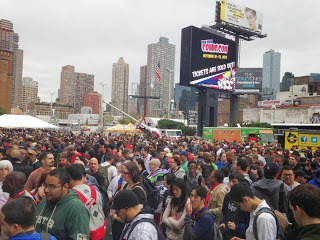
Fan base: This year's New York Comic Con drew some 133,000 attendees, yet only 9 percent of its content was devoted to anime and manga. | NEW YORK COMIC CON / REEDPOP
Has anime lost its cachet in America?
BY ROLAND KELTS
NOV 12, 2013
I had been invited to host a Q&A with renowned “Gundam” creator and sci-fi novelist Yoshiyuki Tomino at The New York Anime Festival. But when my handler and I arrived at the designated room, we found it empty and dark. “Over here,” a staffer called from across the hall. “Too many people.”
The auditorium we entered was cavernous — the largest room in the city’s biggest convention venue, the Jacob K. Javits Center — and its seats were filled from front to back, with a string of fans and photographers lining the perimeter. My handler escorted me backstage to greet Tomino, who was squinting through the curtains as he scanned the room. He turned to me and said: “I am very surprised.”
The standing ovations and thoughtful silences accompanying our onstage conversation seemed to indicate that anime fandom was alive and well in the New York City area. While “Gundam” is a consecrated classic in Japan, it’s hardly the title that brings out the “Pokemon” and “Naruto” legions in the United States. Yet here was a full house for the man who had decades before created one of Japan’s most iconic and beloved giant robots.
That was four years ago. Today, the stand-alone New York Anime Festival (NYAF) is no more. One year after Tomino’s appearance, the event was folded into the now 8-year-old New York Comic Con (NYCC), an umbrella gathering that spans Marvel and DC comics, among others, sci-fi and blockbuster Hollywood movies, television series, novels and artists, game developers, celebrities and cosplayers — with a smidgen of anime and manga on the side.

“(We’re) now at the upper limits of what the Javits can hold,” said Peter Tatara, international director of content and marketing for ReedPop, a division of Reed Exhibitions, the producers of NYCC. Reed is looking to expand the Con’s dates and locales, exploring venues in other parts of the city.
But gripes about skimpy anime and manga offerings this year reached me even before I received my press pass. “I’m boycotting (NYCC),” one local Asian-culture journalist and anime and manga aficionado told me. “A lot of us are. They don’t care about anime fans anymore, it’s obvious.”
Statistics bear her out. At this year’s NYCC, a mere 9 percent of the vendor booths, panels and presentations had anything to do with manga or anime, according to Tatara. And the graphic on my press pass was not a doe-eyed “Madoka” schoolgirl or swashbuckling “One Piece” pirate, or even a hard-bodied Marvel “Ironman.” It was furrow-faced Rick, the live-action lead from the U.S. TV megahit, “The Walking Dead.”
“We’ve not done the job we need to do courting (the anime industry),” admitted ReedPop’s global vice president and NYCC show manager, Lance Festerman. Festerman met me in a private office several meters above the Con’s pulsing maze of dealer booths and fans. “I think this year in particular, we’ve had kind of a dearth of anime content. I don’t think we’ve put enough emphasis on developing the relationships that are necessary to land the content that’s going to ‘wow’ things. And that’s a commitment on our part. We need to recommit to that fan base.”
NYAF was launched in the late 2000s, just as the anime industry, and the global economy, were going into a tailspin, Festerman explained. The old model of physical sales was disintegrating, and the new digital-delivery model had not yet been monetized. “(NYAF) just wasn’t working from a business perspective. It was great for the fans, but it wasn’t enough premium content. The show was turning into a raft of (independent) dealers selling cat-ears and swords and kimonos. That’s fine, but that’s not premium. We need screenings, guests, large booths promoting games. Cat-ears are important, but they’re not exclusive content.”
After-hour chatter among anime-industry veterans and journalists in bars adjacent to the Javits bordered on being bitter. “One of the biggest artists in the business offered to come this year,” a prominent editor told me, “but the NYCC staff had no idea who he was and dropped the ball.”
Both Festerman and Tatara are keenly aware of the growing disenchantment among anime fans in the U.S., and both separately assured me that Reed will refocus its efforts on anime and manga fans, producers and publishers for NYCC 2014. But they are also focusing on other markets. Tatara recently traveled to Dubai and Singapore to explore opportunities in the Middle East and Southeast Asia. And Festerman promises a big announcement before the end of this year of a Reed-produced Japanese pop-culture convention in Asia — most likely, China.
“We took our video-game expo, PAX, to Melbourne this July and sold it out three months before the show,” says Festerman. “We’re moving on from the BRIC (Brazil, Russia, India and China) economies to the TIME (Turkey, India and the Middle East) economies, but we like the BRICs, too. We’re active in all of those spaces with three buckets — broad-based Comic Cons, Game Cons and Japanese Pop Culture.”
Reed’s strategies for tapping fans beyond the North American market echo much of the talk in and around Tokyo. The rising wealth and consumer passion for Japanese culture has anime producers and manga publishers focusing on fans in New Delhi and Shanghai over New York and San Diego. Officials at METI, the Japanese government ministry overseeing the recently launched, ¥50 billion “Cool Japan” fund, which I’ve mentioned before in this column, told me that they’re now more excited by promotional activities in Singapore than in San Francisco. And Crunchyroll.com, a successful online anime portal that debuted its digital manga site two weeks ago, is fast developing non-English products to expand its reach.
“Anime and manga are a priority for (NYCC) in 2014,” says ReedPop’s Tatara, “and we’re starting conversations on commitment, content and talent before this year’s end.” Perhaps. But like the aging and overstuffed Jacob K. Javits Center, the North American market for Japanese pop culture may have hit its upper limit.
Roland Kelts is the author of “Japanamerica: How Japanese Pop Culture has Invaded the U.S.” He is a visiting scholar at Keio University in Tokyo.
Published on November 12, 2013 18:26
Live in Boston/Salem Mass, for The Peabody Essex Museum, 11/21
Think Astroboy, Speed Racer, and Pokemon
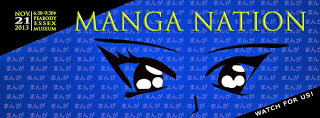
Soulful Robots
Japanese Street Culture Invades Salem
November 21, get ready for gender-bending plotlines, punk-haired heroines and heroes with stars in their eyes! Two Manga and Anime experts will explain what your kids are reading and what you'll be reading next.
The Tannery Series returns to PEM with Roland Kelts (
As always, the wonderfully warm and unconventional PEM/PM evening will include music (VJ Beyonder Domela), craft (Manga drawing lessons), and an opportunity to visit PEM’s latest exhibit, “Future Beauty: Avant-Garde Japanese Fashion,” which showcases the work of designers such as Issey Miyake, Rei Kawakubo and Yohji Yamamoto, who reshaped the world of fashion in the 1980s.
Come dressed as your favorite character. Look, listen, toast and talk with The Tannery Series.
November 21, 2013, 6:30 - 9:30 pm
Peabody Essex Museum
East India Square
Salem, MA
Members and Salem residents (with ID) free; nonmembers $10
Roland Kelts's

Robin Brenner is Teen Librarian at the Brookline Public Library in Massachusetts. She is the editor-in-chief of the graphic novel review website No Flying No Tights. Her first book, Understanding Manga and Anime (Libraries Unlimited, 2007), was nominated for a 2008 Eisner
Copyright © 2013 The Tannery Series, All rights reserved.

Soulful Robots
Japanese Street Culture Invades Salem
November 21, get ready for gender-bending plotlines, punk-haired heroines and heroes with stars in their eyes! Two Manga and Anime experts will explain what your kids are reading and what you'll be reading next.
The Tannery Series returns to PEM with Roland Kelts (
As always, the wonderfully warm and unconventional PEM/PM evening will include music (VJ Beyonder Domela), craft (Manga drawing lessons), and an opportunity to visit PEM’s latest exhibit, “Future Beauty: Avant-Garde Japanese Fashion,” which showcases the work of designers such as Issey Miyake, Rei Kawakubo and Yohji Yamamoto, who reshaped the world of fashion in the 1980s.
Come dressed as your favorite character. Look, listen, toast and talk with The Tannery Series.
November 21, 2013, 6:30 - 9:30 pm
Peabody Essex Museum
East India Square
Salem, MA
Members and Salem residents (with ID) free; nonmembers $10
Roland Kelts's

Robin Brenner is Teen Librarian at the Brookline Public Library in Massachusetts. She is the editor-in-chief of the graphic novel review website No Flying No Tights. Her first book, Understanding Manga and Anime (Libraries Unlimited, 2007), was nominated for a 2008 Eisner
Copyright © 2013 The Tannery Series, All rights reserved.
Published on November 12, 2013 16:02



